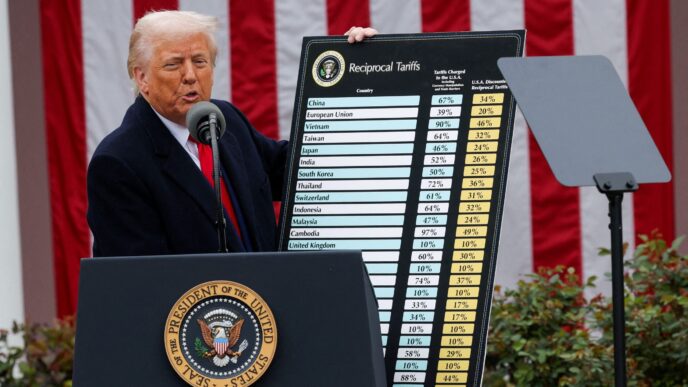Foresight, at its core, is about looking beyond immediate concerns and trends to anticipate what might come next. In a business setting, it involves gathering and analysing signals – technological advancements, shifting consumer preferences, regulatory changes, and broader social movements – to envision possible futures. Unlike mere forecasting, which often projects known patterns forward, strategic foresight embraces uncertainty, explores multiple scenarios, and acknowledges that emergent forces can rapidly alter the marketplace. This forward-looking perspective empowers organisations to spot opportunities and threats early, thereby guiding more informed decision-making and sustainable growth strategies.
In contrast, issues management focuses on identifying potential problems, assessing their impact, and putting measures in place to mitigate them. By integrating foresight into issues management, companies move from a reactive stance – addressing problems only once they arise – to a proactive one, where weak signals and nascent risks are recognised and acted upon early. For instance, organisations that track emerging policy debates or environmental concerns can adjust their practices well before new regulations force a scramble. This approach not only reduces the severity of potential crises but also enhances stakeholder trust, as proactive engagement demonstrates responsibility and adaptability. Ultimately, combining foresight with issues management enables a more agile, future-ready organisation – one that views tomorrow’s challenges as opportunities for innovation and strategic advantage rather than inevitable stumbling blocks.
The Value of Future Thinking for Competitive Advantage
- Early Detection of Emerging Trends: In an era defined by rapid technological shifts and ever-changing consumer expectations, relying solely on historical data or current market dynamics can leave organisations vulnerable. Future thinking helps companies hone in on subtle signals that may herald significant change – whether it’s a budding consumer preference, an early-stage technology, or a forthcoming policy directive. By spotting such developments ahead of competitors, businesses can adjust their strategies accordingly, positioning themselves to ride the wave of change rather than be swamped by it. This foresight-driven approach not only reduces the risk of costly surprises but also bolsters decision-making, as leaders can plan product roadmaps, investments, and partnerships with a more robust understanding of the potential market landscapes ahead.
- Proactive Issues Management: Foresight is especially powerful when combined with robust issues management. Instead of waiting for a crisis or regulatory clampdown to force reactive measures, organisations can scan the horizon for warning signs – shifts in public sentiment, legislative discussions, or emerging activism – and take action before challenges escalate. For instance, a company monitoring sustainability discourse might pre-emptively overhaul its supply chain to reduce environmental impact well before governments impose stringent regulations. This proactive stance has a multiplier effect: it not only safeguards brand reputation but also builds goodwill with stakeholders who see the organisation as forward-thinking and responsible. Over time, these small, timely interventions can save significant resources and protect against reputational harm.
- Innovation and Market Leadership: At the heart of strategic foresight lies the capacity to see beyond immediate obstacles and envision new possibilities. Businesses that regularly explore future scenarios often uncover market gaps and unmet needs that others have yet to notice. By investing in innovative products, services, or business models that address these nascent opportunities, organisations can establish themselves as industry frontrunners. Take, for example, the rise of electric vehicles or plant-based food alternatives: many early adopters capitalised on evolving consumer consciousness around sustainability and health, achieving both market share and reputational benefits. In essence, future thinking can spark the kind of innovation that distinguishes a company from its competitors, turning potential threats into catalysts for growth.
Core Components of a Foresight-Driven Approach
Horizon Scanning
Foresight begins with a broad and systematic look at the external environment. Horizon scanning involves scanning for early signals of change – such as hints of new legislation, social movements gaining traction, technological breakthroughs, or shifts in global economic conditions. This process often draws on diverse sources: academic journals, think tank reports, patent filings, emerging policy discussions, and even social media trends. By gathering these fragments of information, organisations can piece together a more holistic view of where the market or society could be headed.
Scenario Planning
Once an organisation has identified potential signals of change, the next step is to construct multiple future scenarios. Rather than predicting a single “most likely” outcome, scenario planning explores a range of plausible possibilities – best case, worst case, and several variations in between. This exercise helps leaders visualise how different factors (e.g., economic cycles, policy frameworks, consumer behaviours) might interact. For instance, a technology company might consider how its market strategy should adapt under scenarios of tight data privacy regulations versus a more laissez-faire regulatory climate. By mentally “living” in these alternate realities, decision-makers can pressure-test current strategies, identify blind spots, and develop contingency plans. Scenario planning ultimately provides a structured way to prepare for an unpredictable future, building organisational agility and resilience.
Trend Analysis and Stakeholder Mapping
To connect horizon scanning and scenario planning with real-world organisational priorities, it’s essential to conduct both trend analysis and stakeholder mapping. Trend analysis synthesises the raw data – from demographic shifts to disruptive tech innovation – into clear insights about how broader forces could affect the business. This insight might reveal, for example, that younger consumers are increasingly motivated by social impact, prompting a re-evaluation of corporate social responsibility efforts.
Simultaneously, stakeholder mapping ensures that decision-makers remain sensitive to diverse perspectives and power dynamics. By identifying each stakeholder group – customers, regulators, investors, local communities, or advocacy organisations – and understanding their interests, concerns, and influence, organisations can better prioritise issues and tailor their communication and engagement strategies. Taken together, trend analysis and stakeholder mapping transform broad foresight insights into actionable intelligence, enabling a proactive, issues-focused approach that keeps organisations ahead of emerging challenges.
Building Foresight into Issues Management Processes
A key step in leveraging future thinking for issues management is embedding foresight activities into existing risk assessment frameworks. Rather than focusing solely on known vulnerabilities – like current financial exposures or regulatory requirements – organisations can also scan for emerging challenges that may not yet register on traditional risk radars. This might involve analysing weak signals in government policies, technological breakthroughs, or shifting social attitudes to determine how they could evolve into significant threats over time. In practical terms, cross-functional teams (legal, communications, R&D, etc.) can meet regularly to review horizon-scanning findings, incorporating those insights into the organisation’s risk register. By weaving foresight into these ongoing assessments, leaders can prioritise forward-looking risks alongside present-day concerns, ensuring a more holistic approach to safeguarding the organisation.
Even the most comprehensive foresight analysis loses value if warning signs aren’t translated into timely action. Establishing monitoring and escalation protocols ensures that when indicators of a potential issue begin to surface – be it a spike in social media chatter about a controversial industry practice or an early draft of legislation that might impact operations – the right people are alerted promptly. Organisations can define thresholds or “triggers” that dictate when an emerging concern should be escalated, who is responsible for addressing it, and what initial steps are required. This systematic process prevents minor signals from slipping through the cracks and morphing into full-blown crises. Moreover, it allows teams to respond with a calm, strategic mindset rather than scrambling in panic mode.
Effective issues management isn’t just about identifying problems early; it’s about staying agile as the landscape continues to shift. With a foresight-driven approach, organisations recognise that the trajectory of an emerging issue can change rapidly if external conditions evolve. Dynamic response strategies account for multiple scenarios – ranging from mild disruption to major upheaval – and outline tiered action plans suited to each situation. For example, a “level one” response might involve a measured public statement and internal briefing, while a “level three” response could require a dedicated crisis team and daily stakeholder updates. By planning these actions in advance, leaders maintain clarity and composure under pressure. They can adapt tactics on the fly, guided by real-time data and continuous foresight inputs, ensuring that the organisation remains proactive and prepared – even in the face of uncertainty.
Foresight Tools and Techniques for Issues Management
- Data Analytics and AI: With unprecedented volumes of information available – ranging from social media posts to government reports – data analytics and AI have emerged as pivotal tools in identifying early signals of change. Advanced analytics can sift through large datasets to uncover subtle patterns, whether they pertain to shifting public sentiment or emerging policy proposals. Natural language processing (NLP) tools, for example, can comb through news articles or social media chatter to flag rising concerns or debates relevant to the organisation’s industry. Machine learning algorithms then use these insights to predict how certain issues might evolve over time, giving leaders a head start in planning responses. By integrating these data-driven findings into broader foresight processes, businesses can make more informed decisions about resource allocation and strategic pivots, ensuring they stay ahead of fast-moving developments.
- Expert Panels and Advisory Networks: While data and AI can highlight patterns, human expertise adds context and nuance. Organisations that tap into diverse networks – academics, policy specialists, futurists, or even professionals from adjacent industries – gain a richer understanding of how multiple factors might intersect. These expert panels can meet periodically to discuss weak signals, validate emerging trends, and explore potential game-changers. In doing so, they help decision-makers see beyond their immediate operational concerns and imagine wider implications of unfolding events. Such partnerships can be particularly beneficial in complex domains like climate change regulations or ethical considerations around new technologies, where specialised knowledge is essential for accurate foresight. By regularly engaging these expert networks, companies create an ongoing feedback loop that continuously informs and refines their issues management strategies.
- Signal Mapping and Storytelling: Data points and expert insights become far more actionable when teams can visualise and communicate them effectively. Signal mapping – plotting key indicators of change on a timeline or thematic chart – helps clarify how seemingly disparate events might be interlinked. For instance, a sudden uptick in consumer activism could tie into regulatory shifts on environmental standards, forming a multi-threaded narrative about rising sustainability demands. Once these connections are established, storytelling techniques come into play. Constructing simple, coherent narratives around these signals makes it easier for stakeholders – be they executives, employees, or the broader public – to grasp the potential implications of complex issues. By weaving data and expert perspectives into compelling storylines, organisations not only enhance internal awareness but also facilitate clear, targeted messaging when issues escalate, ensuring a proactive and unified response.
- Delphi Method: Originally developed by the RAND Corporation, the Delphi Method involves gathering insights from a panel of diverse experts through multiple rounds of anonymous questionnaires. After each round, a facilitator summarises the feedback, and the panellists have the opportunity to refine or change their positions based on the group’s responses. This iterative process gradually converges on a more refined forecast or consensus, making Delphi particularly useful for complex or uncertain issues where expert judgment is essential. In the context of foresight and issues management, Delphi can help organisations anticipate emerging regulatory frameworks, technological shifts, or societal trends, allowing more informed strategic planning.
- Futures Wheel: The Futures Wheel is a visual brainstorming technique that starts with a central event or trend and branches out to depict its first-, second-, and third-order impacts. By mapping these cascading consequences, teams can see how a single development – like the adoption of a disruptive technology or a shift in consumer values – might spur a chain reaction across different facets of the organisation or industry. This approach helps decision-makers grasp the broader ecosystem of potential changes, revealing hidden risks and opportunities that might otherwise remain overlooked.
- Backcasting: Where most strategic planning looks forward from the present, backcasting begins by imagining a desirable future scenario – such as becoming carbon-neutral by 2030 – and then works backward to chart the milestones and actions needed to make that vision a reality. This perspective shifts the focus from reactive planning to proactive goal setting, encouraging organisations to set ambitious targets and identify the structural or cultural changes necessary to achieve them. In issues management, backcasting can highlight steps to mitigate emerging risks before they become critical, ensuring alignment between daily operations and long-term objectives.
- Cross-Impact Analysis: Rather than examining each trend or event in isolation, cross-impact analysis evaluates how multiple factors might interact to amplify or dampen one another’s influence. For instance, a surge in consumer concern about data privacy could intersect with impending legislation on artificial intelligence, creating a powerful regulatory wave that impacts entire sectors. By modelling these interdependencies, organisations gain a more nuanced understanding of potential scenarios, allowing them to craft strategies that address overlapping challenges – ultimately strengthening both their foresight and their issues management capabilities.
- Trend Matrices and Heat Maps: To prioritise the myriad signals that emerge from horizon scanning and environmental monitoring, trend matrices and heat maps categorise issues by factors such as impact (low to high) and likelihood (unlikely to highly likely). This visual framework helps teams pinpoint where to devote the most attention and resources, distinguishing between slow-burning issues that require ongoing tracking and high-stakes concerns demanding immediate action. As part of issues management, these tools bring clarity and structure to decision-making, reducing the risk of strategic blind spots.
- Scenario Workshops and Simulation Games: Going beyond theoretical exercises, scenario workshops and simulation games immerse participants in plausible future environments or crisis situations, prompting them to role-play responses under realistic conditions. This hands-on engagement deepens understanding, encourages cross-functional collaboration, and reveals potential breakdowns in communication or preparedness. By practicing how to respond to possible crises – such as sudden regulatory changes or rapid market shifts – organisations become more agile, enhancing both their readiness to face disruptions and their ability to capitalise on new opportunities.
Organisational Culture and Leadership for Foresight
Establishing a foresight-driven organisation requires a cultural shift – one where curiosity, experimentation, and long-term thinking take centre stage. Rather than viewing emerging trends or potential threats as disruptions to be ignored or contained, leaders encourage teams to discuss, probe, and envision how these forces could reshape the business. Training programs, workshops, and regular “futures” briefings help employees at every level develop the skills to spot early signals and think beyond immediate operational concerns. By promoting an environment that values questions like “What if?” or “How might this play out in five years?”, organisations empower their workforce to recognise possibilities that traditional, quarter-to-quarter planning may overlook.
Embedding foresight into issues management hinges on visible, committed leadership. When senior executives champion horizon scanning or scenario planning, it signals to the broader organisation that proactive future-thinking isn’t merely an optional exercise but a strategic imperative. Leaders can further demonstrate accountability by allocating budget for foresight initiatives, dedicating staff time to exploring emerging trends, and assigning clear ownership of future-oriented projects. Importantly, this commitment must extend to acting on foresight findings, even if they challenge current assumptions or demand challenging trade-offs. By putting decisions into motion – such as pivoting resources based on an anticipated market shift – leaders show the entire organisation that foresight is more than a theoretical process; it’s a driver of tangible, forward-looking action.
A futures mindset shouldn’t reside solely in a single department or leadership circle. To realise its full potential, foresight initiatives should bring together perspectives from across the enterprise – IT, finance, marketing, HR, legal, and more. Cross-functional “futures teams” or working groups can synthesise diverse insights: for instance, an IT lead might track emerging technologies, a communications specialist might monitor public sentiment, and a compliance officer could anticipate regulatory shifts. When these insights converge, the organisation gains a more holistic understanding of how potential changes intersect, shaping both opportunities and risks. This inclusive approach also deepens buy-in among employees, who see their expertise being used to inform meaningful strategic decisions. Over time, such collaboration weaves foresight into the operational fabric of the organisation, making it a shared responsibility rather than a niche exercise reserved for a few futurists at the top.
Measuring the Impact of Foresight in Issues Management
To demonstrate the tangible value of foresight-driven issues management, organisations need clear, actionable metrics. Traditional risk indicators – like reduced incident frequency or lower legal costs – remain useful, but foresight calls for a broader lens. For instance, companies might track the speed at which they identify and respond to weak signals, the number of potential issues averted, or the level of stakeholder satisfaction over time. Similarly, measuring market share shifts, innovation adoption rates, or product launch success in areas flagged through horizon scanning can illustrate foresight’s direct contribution to competitive advantage. By linking these metrics to strategic goals – such as growth targets or brand positioning – leaders can build a compelling case for sustained investment in future thinking.
Metrics become more powerful when paired with ongoing feedback mechanisms. Regular check-ins – monthly dashboards, quarterly reviews, or dedicated “foresight labs” – allow teams to assess how their predictions and response plans are holding up against real-world developments. If certain forecasts fall flat or unexpected issues emerge, organisations can refine their data sources, update scenario assumptions, and adjust their monitoring strategies. This iterative process also nurtures a culture of learning, where insights from past experiences fuel smarter decision-making. Over time, teams become more adept at detecting early warning signals, calibrating their response protocols, and reassessing strategic priorities. These continuous improvements not only sharpen the organisation’s foresight capabilities but also bolster its agility in navigating an ever-changing risk landscape.
Conclusion
In a world where markets shift rapidly and unexpected disruptions can redraw entire industries, foresight offers organisations a way to stay ahead of the curve rather than scramble in response. By systematically scanning the horizon for emerging issues and trends, leaders can equip their teams to navigate the inevitable twists and turns of the business landscape. This proactive stance not only mitigates risks but also positions companies to identify fresh opportunities – whether that’s developing groundbreaking products, entering new markets, or reshaping stakeholder engagement in innovative ways.
Leaders who recognise the transformative power of foresight can begin by conducting an honest audit of their current issues management and strategy frameworks. Are you tracking early signals of change, or relying solely on historical data? Do your teams and processes encourage scenario exploration, or do they default to short-term planning? Taking concrete steps – like investing in horizon scanning tools, training cross-functional “futures teams,” or collaborating with external experts – can seed a deeper organisational mindset shift. Gradually, foresight becomes less of a specialised function and more of a shared responsibility that supports nimble, evidence-based decision-making.
Ultimately, embedding future thinking into everyday operations helps organisations adapt to today’s evolving realities while preparing for tomorrow’s unknowns. It builds a culture that sees potential in uncertainty and that regards challenges not merely as threats, but as catalysts for innovation and sustainable growth. By aligning foresight with issues management, companies can transform reactive firefighting into proactive value creation – unlocking a genuine competitive advantage grounded in strategic clarity and a readiness to seize whatever future emerges.













